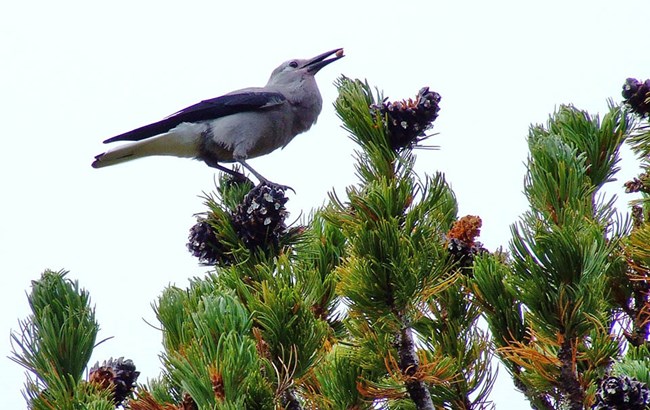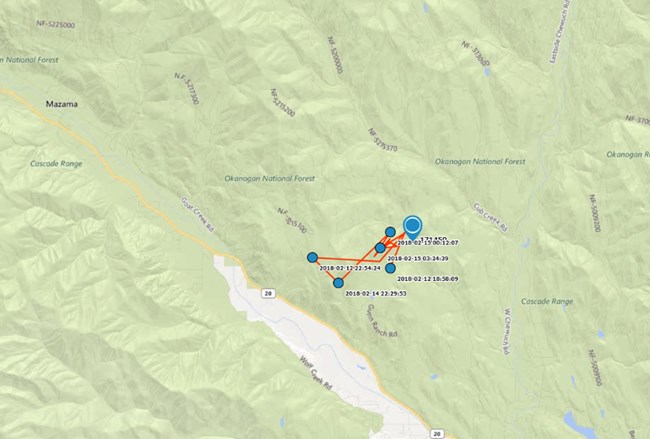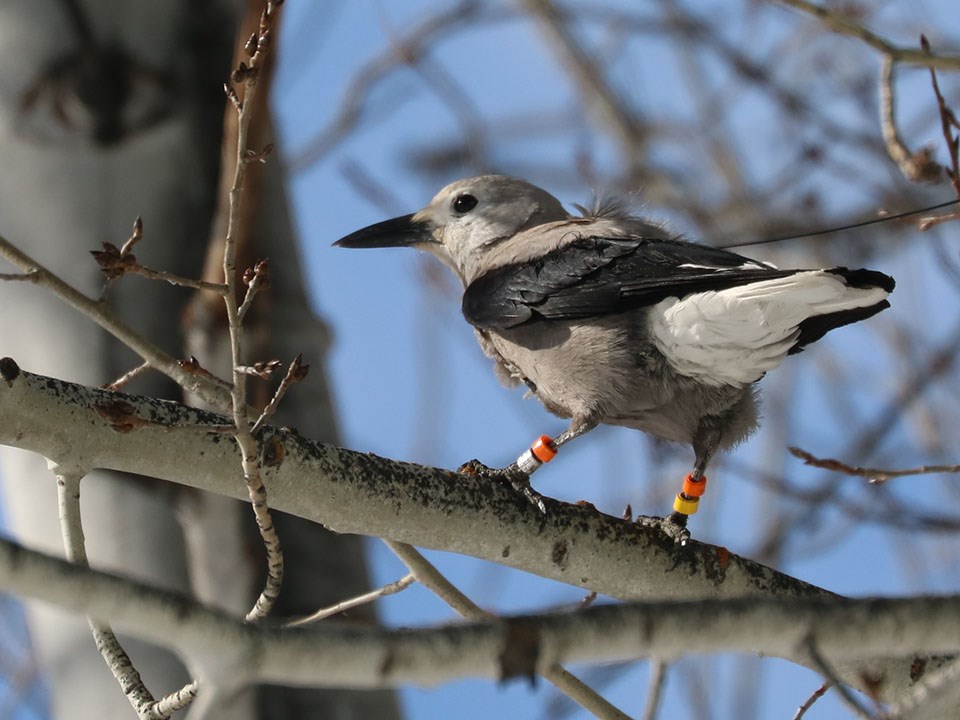Last updated: May 14, 2018
Article
Conserving Imperiled Whitebark Pine and Clark’s Nutcrackers Across the Pacific Northwest

Teresa Lorenz
Whitebark pine (Pinus albicaulis) is an obligate mutualist of Clark's nutcrackers (Nucifraga columbiana) because its seedlings sprout almost exclusively from Clark's nutcracker seed caches. Currently, whitebark pine is rapidly disappearing range-wide, and as of 2015, 51% and 64% of the remaining live whitebark pines were infected by blister rust in North Cascades and Mt. Rainier National Parks, respectively. This high mortality may seriously reduce biodiversity and disrupt many species interactions.
Recent surveys suggest Clark’s nutcrackers are also declining in Washington’s national parks. Due to continuing decline of these species, it is essential to ascertain whether standard whitebark pine management techniques, such as planting and thinning, are adequate, or if there needs to be an increased focus on management of Clark’s nutcrackers, and/or of a mosaic of ecosystems surrounding whitebark pine habitat. A downward trend in Clark’s nutcracker populations would have reciprocal effects for whitebark pine population regeneration, and consequently for the viability of subalpine ecosystems in the western U.S. To sustain whitebark pine communities and subalpine ecosystems, Clark’s nutcracker populations must be maintained. This requires information on landscape scale space use in Clark’s nutcrackers.


Taza Schaming
Additionally, because Clark's nutcrackers are highly mobile, facultative migrants, it is difficult to accurately monitor local population trends. A better understanding of associations between movement and habitat health allows for more accurate predictions of Clark's nutcracker metapopulation stability and resilience of the Clark's nutcracker-whitebark pine mutualism. Understanding Clark's nutcracker movement patterns from different regions is critical for designing effective local and range-wide conservation strategies.
